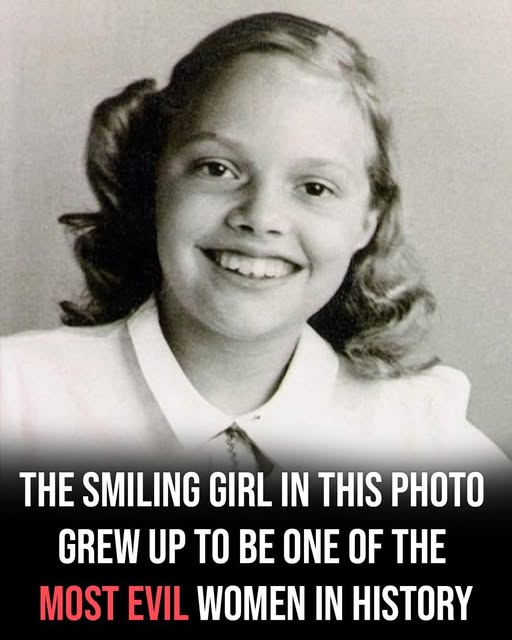Before her name became known across America, before the documentaries and headlines, Aileen Carol Wuornos was simply a little girl from Rochester, Michigan. Born in 1956 to a teenage mother and a father she never met, her story began in hardship and instability — a childhood that would later be studied as a tragic example of how pain and neglect can shape a life.

Aileen’s mother, Diane, was just 14 years old when she married Leo Dale Pittman, a man with a troubled history. Their marriage fell apart quickly, and Pittman spent much of his life in prison. By the time Aileen and her brother Keith were toddlers, their father was incarcerated, where he later died. Aileen never had the chance to know him.
Diane tried to care for her two children, but she was overwhelmed and alone. In 1960, when Aileen was four years old, her mother left the children in the care of their grandparents, Lauri and Britta Wuornos. Though Diane would later say she regretted leaving them, the choice changed Aileen’s life forever.
Outsiders might have thought the Wuornos home was a safe haven, but inside, life was tense and unpredictable. Relatives described the household as unstable — one marked by emotional distance and volatility. Aileen would later say that she rarely felt warmth growing up and had to learn what love looked like by watching other people’s families.
By her early teens, Aileen’s life had become increasingly chaotic. She often skipped school and spent time with older peers. At just 13, she became pregnant, a situation that deeply affected her but was handled quietly by those around her. The child was later placed for adoption, and Aileen returned home without counseling or support. She carried that experience in silence for the rest of her life.
Shortly afterward, tragedy struck again. Her grandmother passed away, and within months, her grandfather also died. Aileen and her brother were placed under state care, moving between foster homes that offered little stability. By the time she was a teenager, she had dropped out of school and was living on the streets, sleeping in cars or abandoned buildings.
She began hitchhiking across the Midwest, surviving in whatever way she could. With no stable home, job, or guidance, Aileen drifted from town to town, occasionally in trouble with the law for minor offenses. Those who met her described a young woman hardened by hardship but still searching for belonging.
By her twenties, Aileen had made her way to Florida. She spent time in the Daytona Beach area, living near truck stops and roadside motels. There, she met Tyria Moore in 1986, and the two began a close relationship. They shared a small apartment, living a modest life marked by financial struggles. Despite the challenges, they formed a bond that would remain central to Aileen’s story.
In 1989, a series of tragic events in central Florida would change everything. Several men were found deceased in separate incidents along highways. Each case shared a common thread — the victims had recently given rides to a woman matching Aileen’s description. Law enforcement worked tirelessly to connect the cases, and in early 1991, Aileen was taken into custody at a small bar in Volusia County.
When questioned by investigators, Aileen claimed that she had acted in fear and that each encounter had spiraled out of control. Prosecutors, however, argued otherwise, saying the incidents were planned. The story quickly drew national attention, and her case became one of the most publicized trials of the decade.
The media portrayed her as cold and emotionless, but those who looked closer saw something more complicated — a woman whose life had been marked by neglect, trauma, and instability from the very beginning. Psychologists later debated the extent to which her experiences as a child influenced her later actions. Many pointed to her upbringing as a tragic example of what can happen when children are left without protection or care.
Aileen’s trial in 1992 captivated the public. She was eventually convicted and sentenced to death. During her time in prison, she gave several interviews where she alternated between remorse, anger, and exhaustion. Some days she spoke quietly about wanting peace; other times she lashed out at the media attention that followed her everywhere.
Her years on death row were filled with reflection and inner turmoil. She maintained that her actions were driven by desperation and fear, not malice. In one interview, she said, “I’ve been through a lot, and I’m just tired. I don’t hate anyone — I just want peace.”
On October 9, 2002, Aileen’s life came to an end in a Florida correctional facility. She was 46 years old. In her final moments, she reportedly spoke words that reflected her belief that she would find peace after death.
Even today, Aileen Wuornos’s story continues to spark debate among criminologists, psychologists, and the public. Was she born with violent tendencies, or did years of abandonment and trauma push her toward an irreversible path?
Her case has inspired numerous documentaries, films, and books — not to glorify her actions, but to understand how such a life unfolds. Many who study her story argue that it serves as a warning about the long-term effects of neglect, abuse, and untreated trauma. They see it not as an excuse, but as an opportunity for society to reflect on what happens when vulnerable people fall through the cracks.
While her name remains associated with crime, the child she once was — a little girl from Michigan who wanted to be loved and cared for — is often forgotten. That contrast between innocence and tragedy is what makes her story so haunting.
In the end, Aileen Wuornos’s life is a reminder that behind every headline lies a human being shaped by circumstances, choices, and pain. Her story cannot undo what happened, but it continues to raise important questions about empathy, accountability, and how society treats those who need help the most.
Aileen’s journey from a troubled childhood to national infamy remains one of the most complex and tragic tales in modern American history — a life that began in hope, descended into despair, and ended as both a cautionary tale and a call for compassion.





